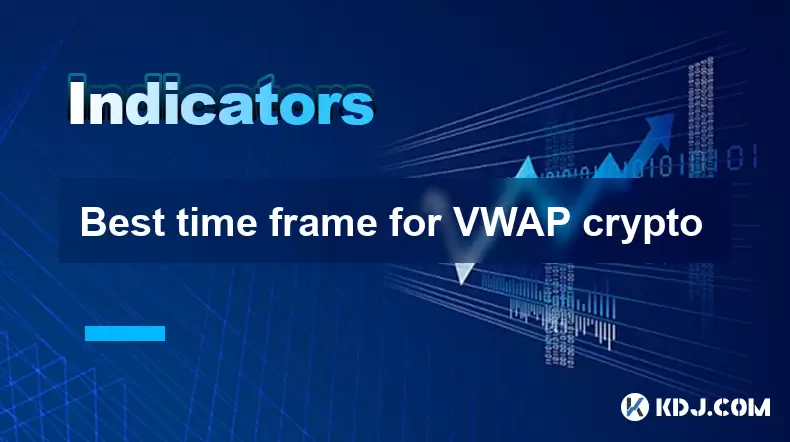-
 Bitcoin
Bitcoin $120400
1.77% -
 Ethereum
Ethereum $3615
7.90% -
 XRP
XRP $3.580
17.84% -
 Tether USDt
Tether USDt $1.001
0.06% -
 BNB
BNB $729.4
1.25% -
 Solana
Solana $179.9
5.04% -
 USDC
USDC $0.0000
0.01% -
 Dogecoin
Dogecoin $0.2311
8.22% -
 TRON
TRON $0.3226
4.04% -
 Cardano
Cardano $0.8490
12.85% -
 Hyperliquid
Hyperliquid $46.45
0.72% -
 Stellar
Stellar $0.4913
8.54% -
 Sui
Sui $4.027
2.00% -
 Chainlink
Chainlink $18.51
11.67% -
 Hedera
Hedera $0.2818
21.51% -
 Avalanche
Avalanche $24.03
7.40% -
 Bitcoin Cash
Bitcoin Cash $508.5
2.90% -
 Shiba Inu
Shiba Inu $0.00001496
3.24% -
 UNUS SED LEO
UNUS SED LEO $8.961
1.83% -
 Toncoin
Toncoin $3.264
3.13% -
 Litecoin
Litecoin $104.6
8.15% -
 Polkadot
Polkadot $4.389
6.11% -
 Uniswap
Uniswap $9.924
10.63% -
 Monero
Monero $337.9
0.49% -
 Pepe
Pepe $0.00001376
2.79% -
 Bitget Token
Bitget Token $4.830
2.46% -
 Ethena USDe
Ethena USDe $1.001
0.05% -
 Dai
Dai $1.000
0.02% -
 Aave
Aave $325.2
1.66% -
 Bittensor
Bittensor $423.7
-0.85%
Best time frame for VWAP crypto
VWAP helps crypto traders identify fair prices by weighting volume and price, with time frames chosen based on trading strategy—short for day trading, longer for swing or position trading.
Jul 17, 2025 at 02:00 am

Understanding VWAP in the Context of Cryptocurrency Trading
VWAP, or Volume Weighted Average Price, is a critical tool for traders in the cryptocurrency market. It calculates the average price of an asset based on both volume and price, providing insight into the true value of a digital asset over a specific time period. In crypto trading, where volatility can significantly impact decision-making, VWAP helps traders identify fair prices by considering how much volume was traded at each price level.
Unlike traditional financial markets, cryptocurrency operates 24/7, which means there's no fixed session to reset VWAP calculations daily. This continuous nature raises questions about the best time frame for using VWAP in crypto. Traders often debate whether to use short-term intervals like 15 minutes or longer ones such as 4 hours or even daily charts.
How Time Frames Affect VWAP Accuracy and Relevance
The accuracy of VWAP depends heavily on the chosen time frame. Shorter intervals provide more granular data but may be prone to noise and false signals due to high volatility. Conversely, longer time frames smooth out erratic price movements and offer clearer trends, though they may lag behind real-time price action.
For instance, if you're a day trader focusing on intraday swings, using VWAP on a 1-hour chart might give better entry and exit points than a daily chart. On the other hand, swing traders holding positions for several days could benefit more from a 4-hour or daily VWAP to capture broader market sentiment.
It's also essential to understand that VWAP resets at the start of each new session when used traditionally. However, in crypto, many traders opt for a rolling VWAP instead of resetting it daily to maintain continuity across sessions.
Popular Time Frames Used with VWAP in Crypto Markets
1-minute to 15-minute charts: These are favored by scalpers who aim to profit from small price changes. While VWAP can help spot immediate support/resistance levels, its reliability diminishes due to low volume and high frequency of trades.
30-minute to 1-hour charts: Commonly used by active day traders, these intervals strike a balance between responsiveness and stability. Here, VWAP serves as a dynamic benchmark for evaluating trade execution quality.
4-hour charts: Suitable for medium-term traders, this time frame allows VWAP to filter out minor fluctuations and focus on significant price-volume interactions.
Daily charts: Long-term investors and analysts often rely on daily VWAP to assess institutional buying or selling pressure. This version of VWAP offers strong reference points for gauging long-term value.
Each time frame has its strengths and weaknesses, so choosing one should align with your trading strategy, risk tolerance, and market conditions.
Customizing VWAP Settings Based on Trading Strategy
While default VWAP settings typically span a single trading session (e.g., 8 hours), crypto traders frequently adjust these parameters to suit their strategies. For example, some may extend VWAP to cover multiple sessions or apply weighted multipliers to recent data points.
One approach involves combining VWAP with moving averages or Bollinger Bands to enhance signal confirmation. Others integrate VWAP divergence analysis—watching for discrepancies between price and VWAP—to detect potential reversals.
Traders also experiment with overlaying multiple VWAP lines on different time frames. This technique, known as multi-timeframe analysis, enables them to cross-reference key levels across various horizons. For instance, a trader might watch the 1-hour VWAP for entries while referencing the 4-hour VWAP for directional bias.
Practical Steps to Implement VWAP Across Different Time Frames
To effectively use VWAP in crypto trading:
Choose a reliable charting platform that supports customizable VWAP indicators, such as TradingView or Binance’s native tools.
Set up VWAP overlays on your preferred time frame (e.g., 1-hour, 4-hour) and ensure it recalculates automatically as new data comes in.
Observe how price interacts with VWAP—if price consistently stays above VWAP, it suggests bullish momentum; if below, bearish dominance.
Combine VWAP with volume profiles to get a clearer picture of where most trading activity occurred.
Test different time frames through backtesting or paper trading before committing real funds.
Avoid relying solely on VWAP without confirming signals with other indicators or order flow data.
By following these steps, traders can fine-tune their VWAP usage and improve decision-making in fast-moving crypto markets.
Common Misconceptions About VWAP Time Frame Selection
A widespread misconception is that there’s a universal best time frame for VWAP applicable to all traders. In reality, effectiveness varies depending on individual objectives and market structure. Some believe that shorter time frames always yield better results, but they often lead to overtrading and emotional decisions.
Another misunderstanding is assuming VWAP works equally well in ranging and trending markets. In sideways conditions, VWAP may act as a magnet pulling price toward it, while in strong trends, price can remain far away from VWAP for extended periods.
Additionally, many overlook the importance of adjusting VWAP for major news events or exchange-specific behaviors, which can skew volume and distort readings.
Frequently Asked Questions
Q: Can I use VWAP on tick or volume-based charts in crypto trading?
Yes, some platforms allow VWAP to be applied on tick or volume-based charts. However, the interpretation differs since these charts don't follow fixed time intervals. Tick-based VWAP reflects smaller, rapid transactions, while volume-based VWAP adjusts according to cumulative trade size.
Q: How does VWAP compare to TWAP in crypto?
TWAP (Time Weighted Average Price) focuses purely on time rather than volume, making it less sensitive to sudden surges in trading activity. VWAP gives more weight to high-volume periods, offering a more realistic average price during intense market phases.
Q: Is VWAP suitable for altcoin trading?
Absolutely, but with caution. Altcoins often have lower liquidity and higher volatility, which can make VWAP less stable. It’s advisable to combine VWAP with volume filters or screen for assets with sufficient trading depth before applying it.
Q: Should I reset VWAP every 24 hours in crypto?
Crypto markets never close, so resetting VWAP daily isn’t mandatory. Many traders prefer a rolling VWAP calculation to maintain context across sessions. However, resetting can help isolate specific events or trading windows, especially for short-term strategies.
Disclaimer:info@kdj.com
The information provided is not trading advice. kdj.com does not assume any responsibility for any investments made based on the information provided in this article. Cryptocurrencies are highly volatile and it is highly recommended that you invest with caution after thorough research!
If you believe that the content used on this website infringes your copyright, please contact us immediately (info@kdj.com) and we will delete it promptly.
- XRP, Dogecoin, and Crypto Bills: What's Shaking in the Crypto World?
- 2025-07-18 20:50:13
- Trump, Family Business, and Power: A New Era of Conflicts?
- 2025-07-18 20:30:12
- Trump, Business, & Bitcoin: A Crypto Capitalist's Vision
- 2025-07-18 20:40:12
- MEXC's Q2 Domination: Riding the Crypto Wave to Market Leadership
- 2025-07-18 18:30:12
- Caldera (ERA) Takes Flight: Binance Listing Ignites Crypto Surge
- 2025-07-18 19:10:13
- Hex Trust and Algorand: Institutional Staking Rewards Take Center Stage
- 2025-07-18 19:50:13
Related knowledge

Advanced RSI strategies for crypto
Jul 13,2025 at 11:01am
Understanding the Basics of RSI in Cryptocurrency TradingThe Relative Strength Index (RSI) is a momentum oscillator used to measure the speed and chan...

Crypto RSI for day trading
Jul 12,2025 at 11:14am
Understanding RSI in the Context of Cryptocurrency TradingThe Relative Strength Index (RSI) is a momentum oscillator used to measure the speed and cha...

Crypto RSI for scalping
Jul 12,2025 at 11:00pm
Understanding RSI in the Context of Crypto TradingThe Relative Strength Index (RSI) is a momentum oscillator widely used by traders to measure the spe...

What does an RSI of 30 mean in crypto
Jul 15,2025 at 07:07pm
Understanding RSI in Cryptocurrency TradingRelative Strength Index (RSI) is a momentum oscillator widely used in cryptocurrency trading to measure the...

What does an RSI of 70 mean in crypto
Jul 13,2025 at 06:07pm
Understanding the RSI Indicator in Cryptocurrency TradingThe Relative Strength Index (RSI) is a widely used technical analysis tool that helps traders...

Does RSI work in a bear market for crypto
Jul 16,2025 at 01:36pm
Understanding RSI in Cryptocurrency TradingThe Relative Strength Index (RSI) is a momentum oscillator used by traders to measure the speed and change ...

Advanced RSI strategies for crypto
Jul 13,2025 at 11:01am
Understanding the Basics of RSI in Cryptocurrency TradingThe Relative Strength Index (RSI) is a momentum oscillator used to measure the speed and chan...

Crypto RSI for day trading
Jul 12,2025 at 11:14am
Understanding RSI in the Context of Cryptocurrency TradingThe Relative Strength Index (RSI) is a momentum oscillator used to measure the speed and cha...

Crypto RSI for scalping
Jul 12,2025 at 11:00pm
Understanding RSI in the Context of Crypto TradingThe Relative Strength Index (RSI) is a momentum oscillator widely used by traders to measure the spe...

What does an RSI of 30 mean in crypto
Jul 15,2025 at 07:07pm
Understanding RSI in Cryptocurrency TradingRelative Strength Index (RSI) is a momentum oscillator widely used in cryptocurrency trading to measure the...

What does an RSI of 70 mean in crypto
Jul 13,2025 at 06:07pm
Understanding the RSI Indicator in Cryptocurrency TradingThe Relative Strength Index (RSI) is a widely used technical analysis tool that helps traders...

Does RSI work in a bear market for crypto
Jul 16,2025 at 01:36pm
Understanding RSI in Cryptocurrency TradingThe Relative Strength Index (RSI) is a momentum oscillator used by traders to measure the speed and change ...
See all articles

























































































